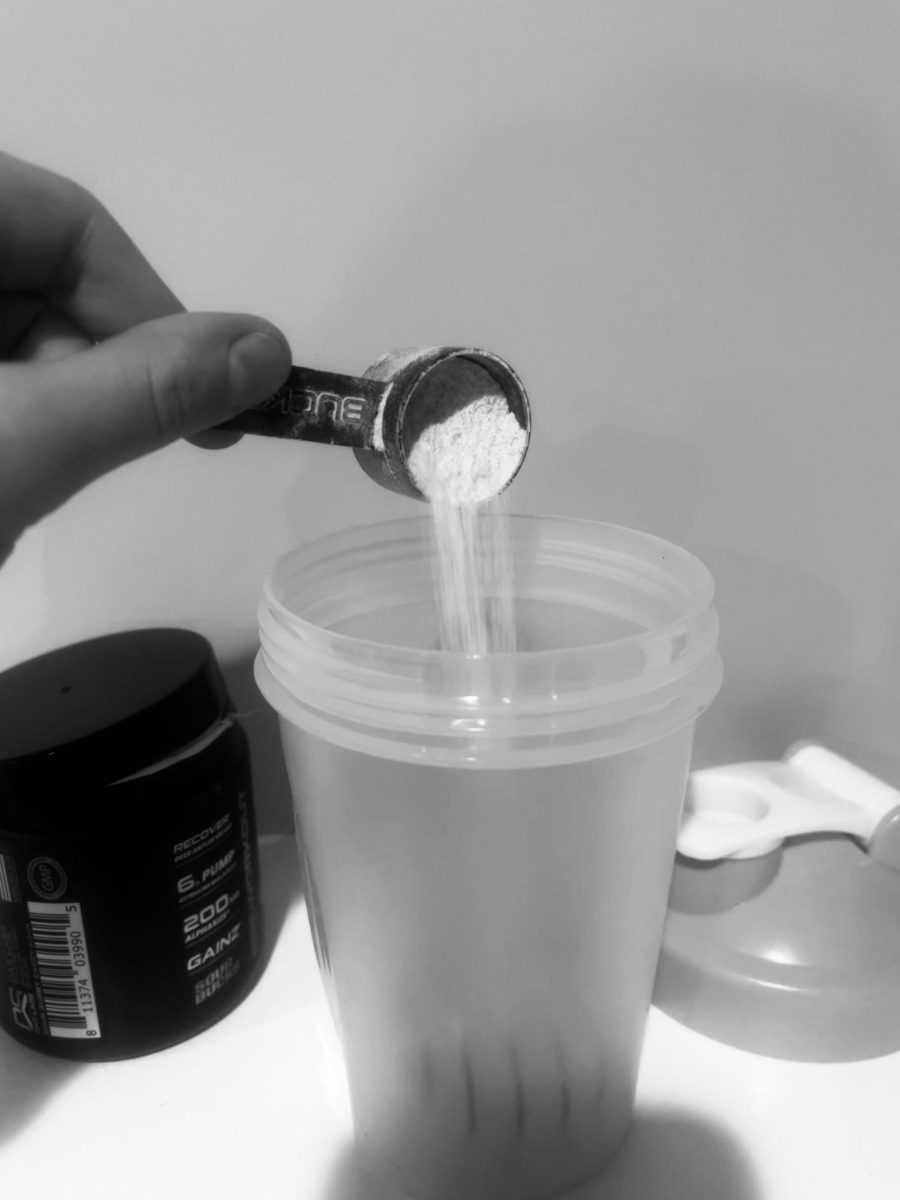Creatine was initially discovered in the 1830s by a French scientist named Michel Eugène Chevreul. He extracted the compound from red meat and fish and named it creatine, meaning meat in Greek. It was not until the 1990s that scientists did targeted research to discover how the substance helps athletes. Since then, the production of creatine in protein powders, drinks, pills, and other orally ingested substances has increased. According to a study from the medical center Mount Sinai, Americans spend around 14 million dollars a year on creatine supplements; by 2022, the market for creatine was sized at 400 million dollars, and it is predicted to continue growing.
Creatine is made up of three amino acids that are produced naturally in the body, but that’s not the only way humans source their creatine every day. While the body produces the majority, a portion comes from the food we eat, such as fish or red meat. For many people, that would be the extent of it; however, many athletes take a creatine supplement, most often in the form of a powder that can be mixed into water.
The amino acids that make up creatine are stored in the liver, kidneys, and pancreas. These organs convert the amino acids into creatine and transport it through the blood to where it is most needed, places doing the “heavy lifting,” including the brain and skeletal muscles.
Creatine is used most commonly for muscle growth. When doing an intense workout, your muscles experience micro-tears because of the strain put on them. When these torn fibers fuse back together, the muscle becomes stronger and bigger. Rest is critical in this process; after an intense workout where your muscles are pushed, if the body is not given time to repair the muscles before the next time you put large amounts of strain on them, the micro-tears are at risk of becoming more significant, and you will be at risk of minor or more severe injuries. Creatine can be used to lessen the rest time your body needs, therefore allowing your muscles to grow stronger faster.
Binding the micro-tears in your muscles requires lots of water; one of the main things creatine does is load your muscles with more water than you would naturally have. The water overload helps your muscles heal faster and allows them to grow faster and stronger. Another important element of creatine is its ability to give you short bursts of energy. Because of the amino acids that make up creatine, it is constantly creating ATP. ATP is a compound used by your cells for energy. Because of these two main elements, creatine is used as a pre-workout and in recovery with the hope of improving movement, speeding up muscle recovery, growing muscles in size and strength and, reducing the risk of injury, dehydration and, cramping.
Creatine isn’t solely used in the fitness industry; current studies are exploring how creatine can be used to ease symptoms of congestive heart failure (CHF) by reducing the fat in the blood. Patients found themselves to be more active. In patients with chronic obstructive pulmonary disease (COPD) and Parkinson’s activity, levels have also been increased because of strengthened muscles due to their creatine intake. Creatine also goes to the brain as well as skeletal muscles, suggesting that taking this supplement could help with certain mental disorders, such as depression, by elevating brain activity.
Though creatine is naturally produced in your body, just like anything, it can be dangerous if taken in too large amounts or too often. Some of the symptoms of an overload of creatine are dizziness, diarrhea, and nausea. If you take creatine regularly and then stop taking it, you can experience dehydration and muscle cramps due to the lack of water.
Taking creatine can have both positive and negative effects on the body; however, there is nothing that suggests it is hazardous for teens specifically. So, would you consider taking creatine?



